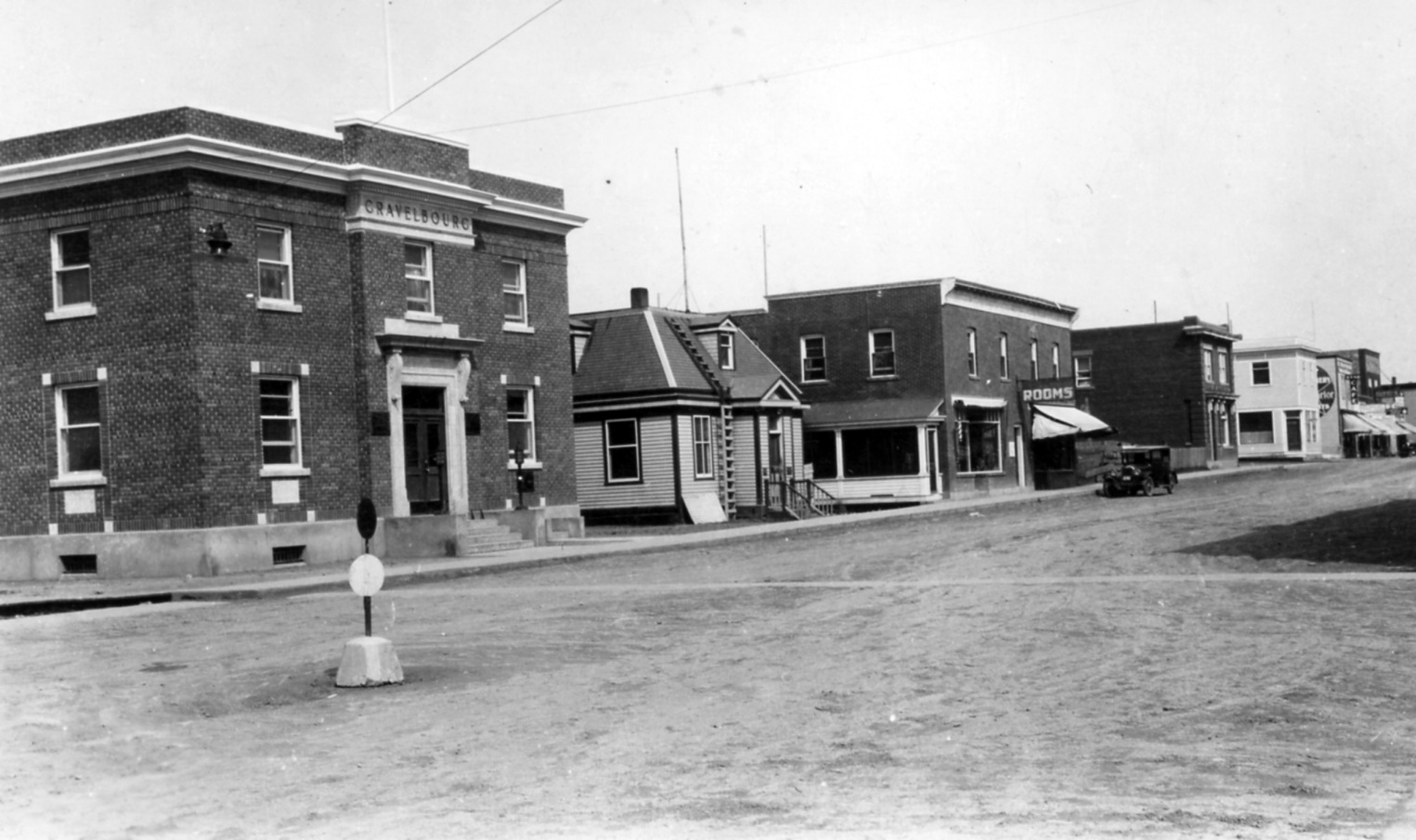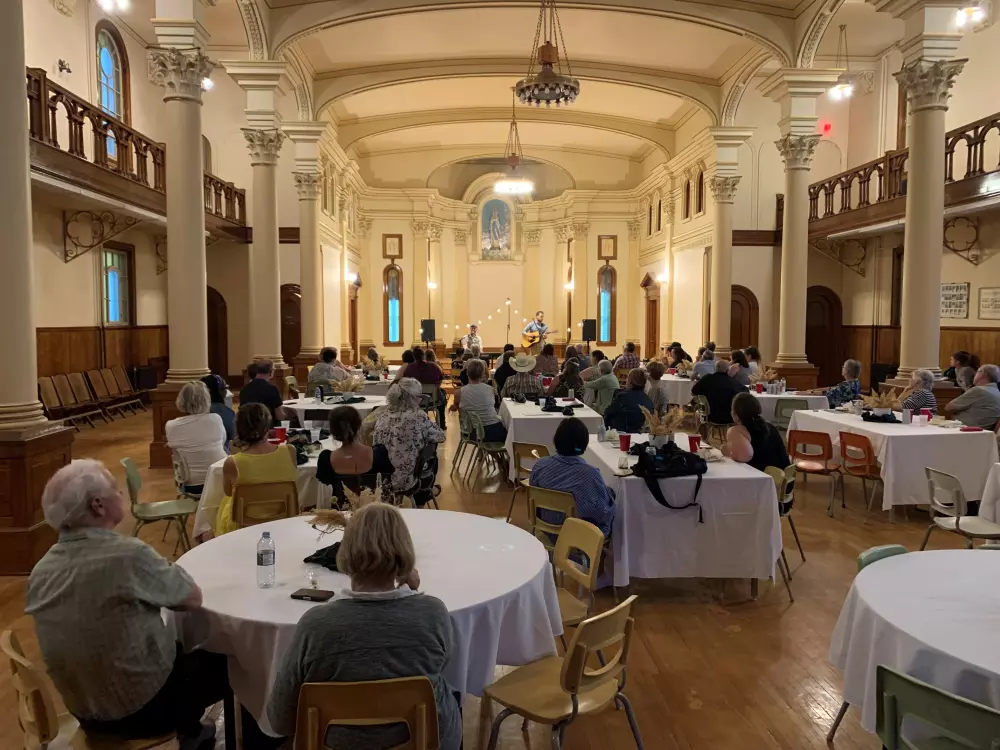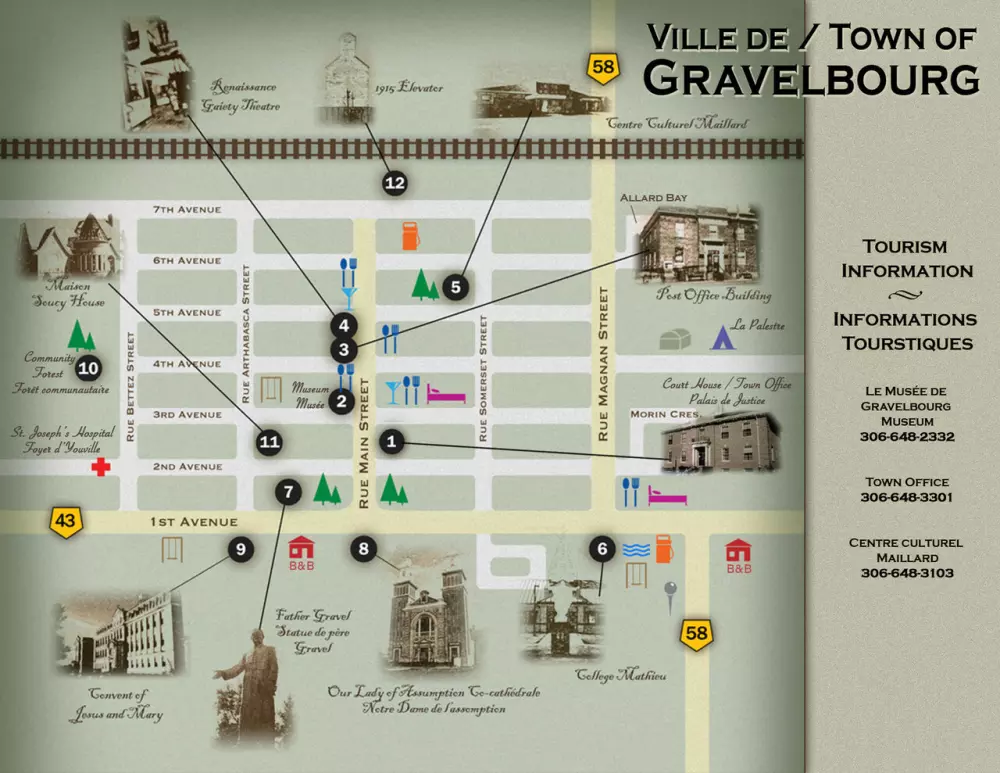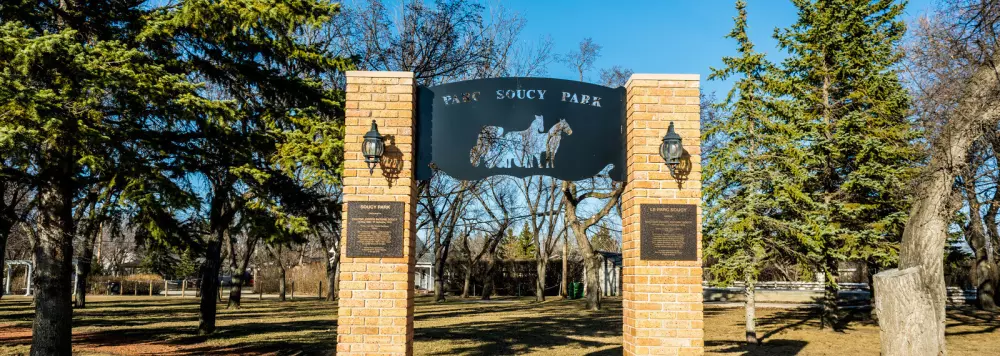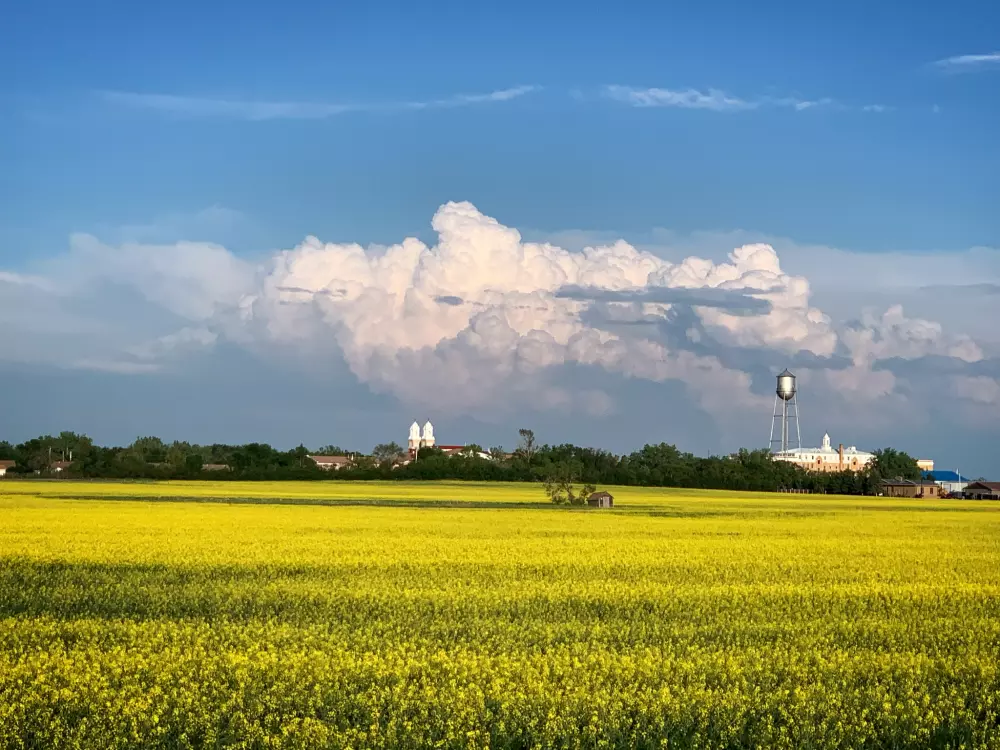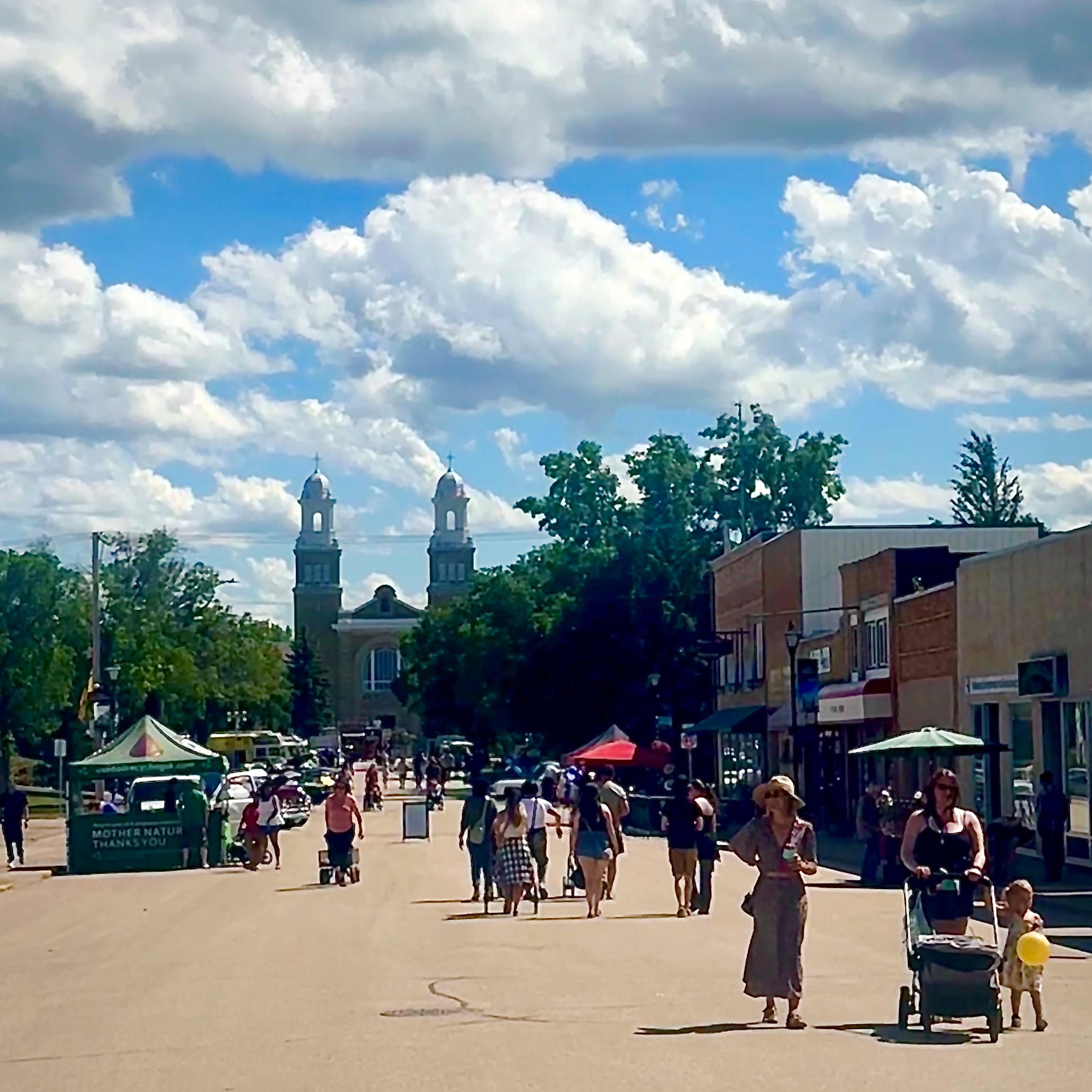
In the Present...
Thanks to its remarkable bilingual heritage, regal architecture and rich culture, Gravelbourg is A Touch of Europe on the Prairies.
Community strengths include well-maintained municipal infrastructure with community parks and green space. There is an ongoing commitment to enhance ecological and environmental initiatives at local and regional levels. Heritage homes predominate in the community and our new sub division provides an unobstructed view of the Saskatchewan prairie.
Gravelbourg is a focal point for the surrounding prairie region. The town is an important service center and home to a large integrated business sector with over 100 businesses spanning the retail, manufacturing and service sectors. The community retains a health, education and cultural orientation with a regional hospital, three physicians, several complementary health practitioners, three distinct elementary and secondary language education programs, a French post-secondary technical institution, and various arts organizations.
In the Past...
"Founded as an outpost of French Canada by a priest from Quebec via New York City, settled in part by Franco-Americans, endowed in the earliest beginnings with institutions whose architecture and aims strove for the grand scale, there is even today something uncommon about Gravelbourg. Certainly it cuts an uncommon outline on the prairie horizon where earth and sky unite, dissolve and disappear into infinity, as they do nowhere else in the world."
- Sister St. John of Kent
Beginning in 1906, pioneers of several ethnic groups with vastly different backgrounds settled in the town and rural municipality of Gravelbourg. Settlers came from other Canadian provinces, and the United States and as well as from many European countries, bringing with them a number of languages, religions and traditions. In the early days of this century, cultural differences were very pronounced and there was great potential for intolerance. Many of these people did not have educational advantages and travel was limited - at first to horse drawn vehicles and later to primitive carts that had to cope with poor roads. Work was hard and time consuming. Yet despite these difficulties, pioneers in this region were able to come together, to breach their differences and to build this community. Gravelbourg and surrounding communities remain a testament to their spirit of cooperation and tenacity.
The Catholic clergy played an important part in the development of French settlements such as Gravelbourg. The parish and the church provided a foundation for the growth of the Fransaskois community, working for the preservation of the French language, which it linked to the survival of the Catholic faith. The clergy was also instrumental in the development of institutions such as Collège Mathieu, the convent schools, public radio and various publications.
The Oblates and various religious orders of women also inspired the pioneers by their devotion to the care of the sick and the education of their children. By 1928, Gravelbourg had a strong infrastructure grounded in the spiritual, educational and health sectors. The Rural Municipality of Gravelbourg is on record as the most populated RM in Saskatchewan in 1928.
Early institutions such as the Grey Nuns Hospital, the Monastery of the Precious Blood, College Mathieu, Jardin Notre Dame and the Covent of Jesus and Mary (now the Elementary and High School) have made the transition into present day health and education service providers.
The rich soil of the south-central region spawned a bountiful agricultural sector for this community. Prior to the Depression, Gravelbourg once had as many as nine grain elevators, attesting to the degree of prosperity in the community. Most were hit hard during the Depression and today, only one remains.
For a further look at Gravelbourg's past, take a walk through history and visit the Heritage Walking Tour.

